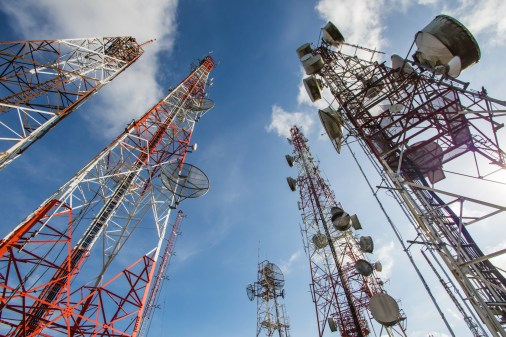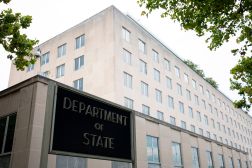EIS vendors ‘concerned’ some agencies won’t make 2022 deadline

The vendors responsible for providing modernized telecom and network services to agencies under the General Services Administration‘s $50 billion Enterprise Infrastructure Solutions (EIS) contract are “concerned” that some won’t make the 2022 deadline to transition to the new vehicle.
Allen Hill, who has been the General Services Administration’s point person managing the EIS transition, said this is the feedback he’s gotten from those nine vendors, telling FedScoop they are “rightfully concerned” that some agencies might not fully transition their services off of expiring contracts by Sept. 30, 2022.
The vendors “do not expect them to be able to make it in such a short period of time because we’re talking about years of network infrastructure out there” that must be transitioned over the next year, Hill said on a recent episode of FedScoop’s Let’s Talk About IT podcast. Hill serves officially as deputy assistant commissioner for category management in GSA’s Office of Information Technology Category.
As of August, few agencies had disconnected 50% of their legacy services from expiring contracts, like EIS’s predecessor Networx, which GSA also manages. Agencies were supposed to have reached that milestone by March 31.
“We’re behind,” Hill said. “There’s about 7 million services still remaining on the legacy contracts to transition. So that’s a lot of inventory to move. And we have right now still remaining… 66 solicitations that still have no task order words as of July 31,” adding that there have been some awards since then that haven’t been reported.
GSA in 2019 decided to give agencies an extension to transition their Networx contracts — originally set to expire in May 2020 — until May 2023. But Hill emphasized that the intent of that extension was to give agencies a buffer for transition — not to wait to award new task orders und EIS, as many have done.
Still, GSA is doing what it can to help those laggards, Hill said. “We have some agencies that are out there that are completing their transition, which is great. And they got out there in front and did what they needed to do. But we’re also doing some things to help those agencies that haven’t.”
That includes creating the Risk Assessment For Transition (RAFT), a process GSA is offering to “help agencies make a realistic assessment of how long their transition will take.” And when it looks like agencies will overrun the deadline with those transitions, GSA helps them explore contingency options.
“The RAFT provides really more of a best-case scenario for them, the perfect-world type scenario that if you did all these things, this is the timeframe,” Hill said. “And even going through that process, agencies are like, ‘Whoa, it’s going to take some time.'”
“It takes time to replace those old technologies with new technologies,” Hill said. Also compounding that challenge, he said, is that “we also have to be concerned about where we’re at today with the pandemic, there are challenges with supply.”
What GSA is not going to do, however, is extend any more deadlines, Hill shared.
“There are no plans to change any dates,” he told FedScoop. “When we have special mission requirements that need special support we address those things in a separate fashion. But we’re not going to change any dates.”
And as of Oct. 1, GSA will no longer allow agencies to make modifications to their legacy contracts.
“What we’re trying to do is not allow an inventory to grow on legacy contracts,” Hill said. “We’re trying to make sure that they’re leveraging EIS to meet their mission requirements.”






